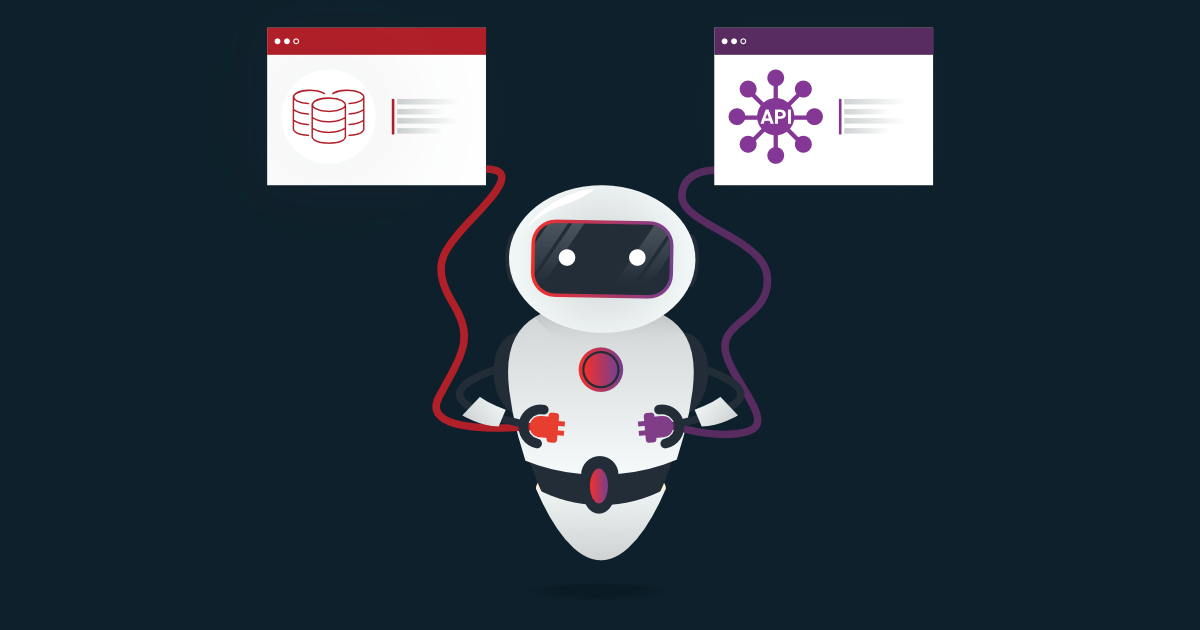APIs have become an essential part of the modern web, providing a simple and consistent way for clients to access and manipulate resources over the internet. Whether you are building a web application, a mobile app, or a microservice, understanding how to design and implement effective APIs is an important skill for any developer.
In this article, we will introduce you to the core concepts of RESTful API development, including resources, representations, and statelessness. These concepts are the foundation of REST, a widely adopted architectural style for building scalable and reliable APIs. By understanding these concepts, you will gain a deeper understanding of how to design and implement APIs that meet the needs of your clients and users.
Definition of a resource in REST
In REST, a resource is a fundamental building block that represents a specific item of data, such as a user, a product, or an order. Resources are identified by URIs (Uniform Resource Identifiers), which are unique addresses that can be used to access and manipulate the resource.
In a RESTful API, each resource is treated as a separate entity that can be accessed and manipulated independently. For example, a resource for a user might be represented by the URI "/users/123", where "123" is the identifier for a specific user. The client can use HTTP methods such as GET, POST, PUT, and DELETE to access and manipulate the resource.
It is important to note that resources in REST are not limited to data stored in a database. They can also represent other resources such as images, videos, or even other web services. The key principle is that resources should be treated as self-contained entities that can be manipulated through the REST API.
Manipulating resources through URIs
The client can use different HTTP methods to manipulate the resource identified by a URI. The most commonly used HTTP methods in REST include:
- GET:
Used to retrieve a representation of the resource. A GET request to the URI "/users/123" might return a representation of the user with an ID of 123 in JSON or XML format. - POST:
Used to create a new resource. A POST request to the URI "/users" with a JSON or XML representation of the new user in the request body might create a new user in the system - PUT:
Used to update an existing resource. A PUT request to the URI "/users/123" with a JSON or XML representation of the updated user in the request body might update the user with an ID of 123 in the system. - DELETE:
Used to delete a resource. A DELETE request to the URI "/users/123" might delete the user with an ID of 123 from the system.
What is the importance of resources in REST API design?
Resources play a crucial role in the design of RESTful APIs. Some of the key benefits of using resources in REST API design include:
- Modularity:
Resources provide a clear structure for organizing data and functionality in the API. This makes it easier to design and maintain the API over time, as well as to add new features and capabilities. - Scalability:
Resources are typically designed to be self-contained entities that can be accessed and manipulated independently. This makes it easier to scale the API to handle large numbers of requests, as well as to add or remove resources as needed. - Interoperability:
Resources in RESTful APIs are typically identified by URIs, which are standard, well-understood addresses. This makes it easier for different clients and services to communicate with each other using the API. - Reusability:
Resources can be used across multiple endpoints in the API, which increases the overall efficiency and reusability of the API. - Flexibility:
Resources can be easily extended to support new features and capabilities, which makes it easier to evolve the API over time without breaking existing clients.
Definition of representations in REST
In REST, a representation is a way of encoding a resource so that it can be transmitted over the internet. A representation typically includes the data associated with a resource, such as the properties of a user or the details of an order, as well as metadata that provides information about the format of the representation.
In REST, resources can be represented in a variety of formats, including JSON, XML, and HTML, among others. The choice of representation format depends on the specific requirements of the client and server.
The choice of representation format is typically determined by the client, which can specify the desired format using the "Accept" header in an HTTP request.
The server, in turn, can provide the desired representation using the "Content-Type" header in the HTTP response. This makes it possible for clients to access resources using the format that is most appropriate for their needs, and for servers to support multiple representation formats if necessary.
It is important to note that representations in REST are not limited to simple data structures. They can also include complex documents, such as HTML pages, that can be rendered directly in a web browser. The key principle is that representations should be self-contained and should include all the information necessary to understand and manipulate the resource.
How does content negotiation enable clients and servers to agree on the format of representations?
Content negotiation is a mechanism in RESTful APIs that enables clients and servers to agree on the format of the representation that is exchanged between them. This allows clients and servers to support multiple representation formats and to dynamically choose the best format for a specific request based on factors such as the client's preferred format, the server's capabilities, and the type of resource being requested.
In REST, content negotiation is achieved through the use of the "Accept" and "Content-Type" headers in HTTP requests and responses. The "Accept" header in a client request indicates the preferred representation formats that the client is able to process. The server, in turn, examines the "Accept" header and selects the best representation format based on the formats it supports and the preferences indicated by the client. The selected representation format is then indicated in the "Content-Type" header of the server's response.
For example, consider a client that wants to request information about a resource in either JSON or XML format. The client can send an HTTP GET request with the following "Accept" header:
Accept: application/json, application/xml;q=0.9
This header indicates that the client prefers to receive the representation in JSON format, but is also able to accept XML format with a lower preference (indicated by the "q=0.9" value). The server will examine the "Accept" header and choose the best representation format based on its capabilities and the client's preferences. If the server supports both JSON and XML formats, it might choose to send the representation in JSON format in response to this request.
Content negotiation enables clients and servers to dynamically choose the best representation format for a specific request, based on factors such as the client's preferences, the server's capabilities, and the type of resource being requested. This helps to ensure that the representation format is well-suited to the needs of both the client and server, and enables RESTful APIs to support a wide range of client and server environments.
Definition of statelessness in REST
Statelessness is a key characteristic of REST and refers to the requirement that each request to a RESTful API must contain all the information necessary to understand and execute the request, without relying on any context or state that is stored on the server. In other words, the server does not maintain any state or memory of previous requests from the client, and each request is treated as an isolated, independent operation.
The benefits of statelessness in REST include:
- Scalability:
Statelessness allows for easy horizontal scaling of RESTful APIs, as each request can be handled by any server in a cluster without the need for the server to maintain any state information. - Resilience:
Statelessness makes it easier to build resilient RESTful APIs that can handle failures and recover quickly, as each request can be redirected to another server in the event of a failure. - Simplicity:
Statelessness makes it easier to design, implement, and maintain RESTful APIs, as the server does not need to manage complex state information or manage the persistence of state information across requests. - Cacheability:
Statelessness enables RESTful APIs to be cached more easily, as the response to a request can be stored in a cache without the need to store any state information.
How does statelessness help improve scalability and reliability of REST APIs?
Statelessness helps to improve the scalability and reliability of REST APIs in the following ways:
- Scalability:
In a stateless REST API, the server does not maintain any state information or context about previous requests. This makes it easier to scale the API horizontally by adding more servers to handle additional requests. Each server can handle any request independently, without the need to coordinate with other servers or access shared state information. This allows for a more flexible and scalable architecture, as the API can easily handle increased traffic by adding more servers to the cluster. - Resilience:
A stateless REST API is also more resilient in the face of failures. If a server goes down, the API can continue to operate without interruption by redirecting requests to other servers in the cluster. This reduces downtime and improves the overall reliability of the API. Additionally, because state information is not stored on the server, it is easier to recover from failures, as there is no need to restore complex state information. - Load balancing:
In a stateless REST API, the server does not maintain any state information, making it easier to distribute requests across multiple servers. Load balancers can route requests to the server that is best suited to handle the request, based on factors such as server load and performance. This helps to improve the overall performance and reliability of the API, as requests can be handled more efficiently by the most appropriate server.
Overall, statelessness is a key characteristic of REST that helps to ensure that REST APIs are scalable, resilient, and reliable. By eliminating the need to maintain state information, statelessness simplifies the design and implementation of RESTful APIs, and makes it easier to build APIs that can handle large amounts of traffic and are able to recover from failures quickly.
Why are these concepts significant in web development and API design?
The significance of the core concepts of REST in web development and API design can be summarized as follows:
- Resources:
Resources are the central focus of RESTful APIs and provide a clear and consistent way to identify and manipulate entities. By defining the resources that an API exposes, developers can create an intuitive and easily navigable API that makes it easy for clients to access and manipulate the data they need. - Representations:
Representations provide a flexible and powerful way for clients and servers to exchange information. By using content negotiation, the API can provide representations in a variety of formats, such as JSON, XML, HTML, and others, allowing clients to choose the format that best suits their needs. This helps to ensure that the API is accessible to a wide range of clients, regardless of their technical capabilities. - Statelessness:
Statelessness is a key characteristic of RESTful APIs that helps to ensure scalability, reliability, and maintainability. By eliminating the need to maintain state information on the server, statelessness enables the API to be more flexible and scalable, and helps to ensure that the API is more resilient in the face of failures.
Overall, these concepts are essential in web development and API design as they help to create APIs that are intuitive, flexible, scalable, and reliable. By following the principles of REST, developers can build APIs that provide a simple and consistent way for clients to access and manipulate resources, and that are well suited to the needs of modern web and mobile applications.
 is now
is now


